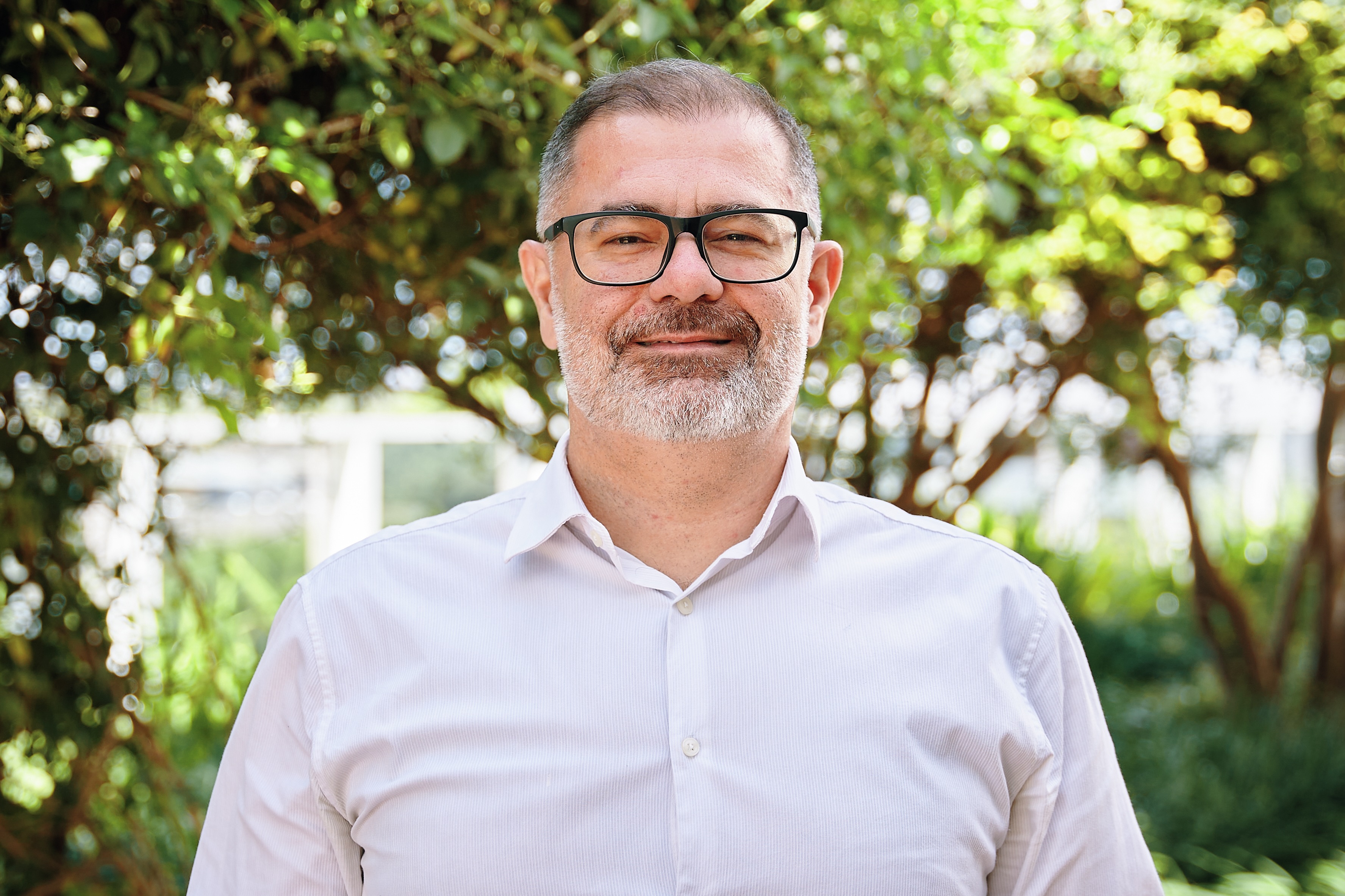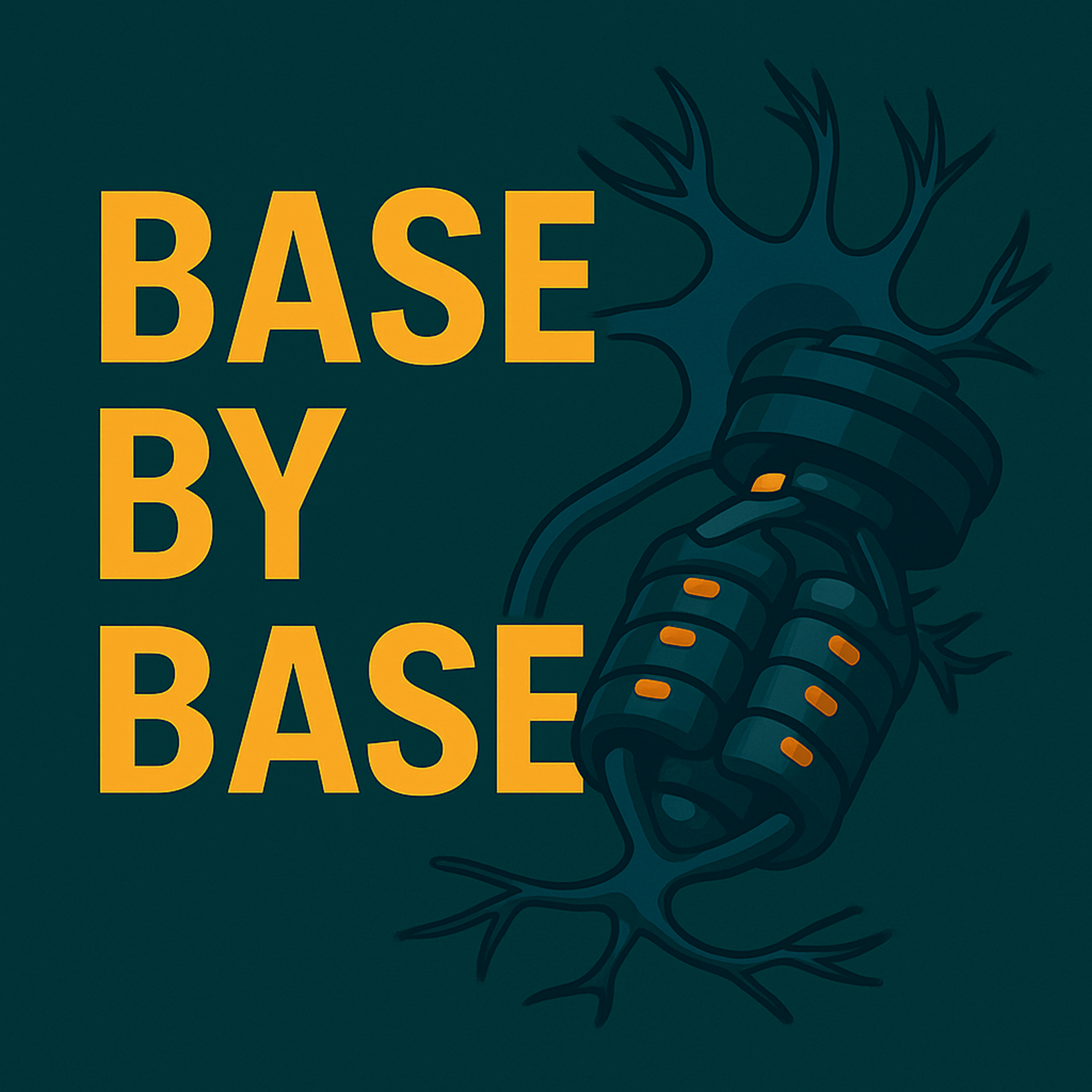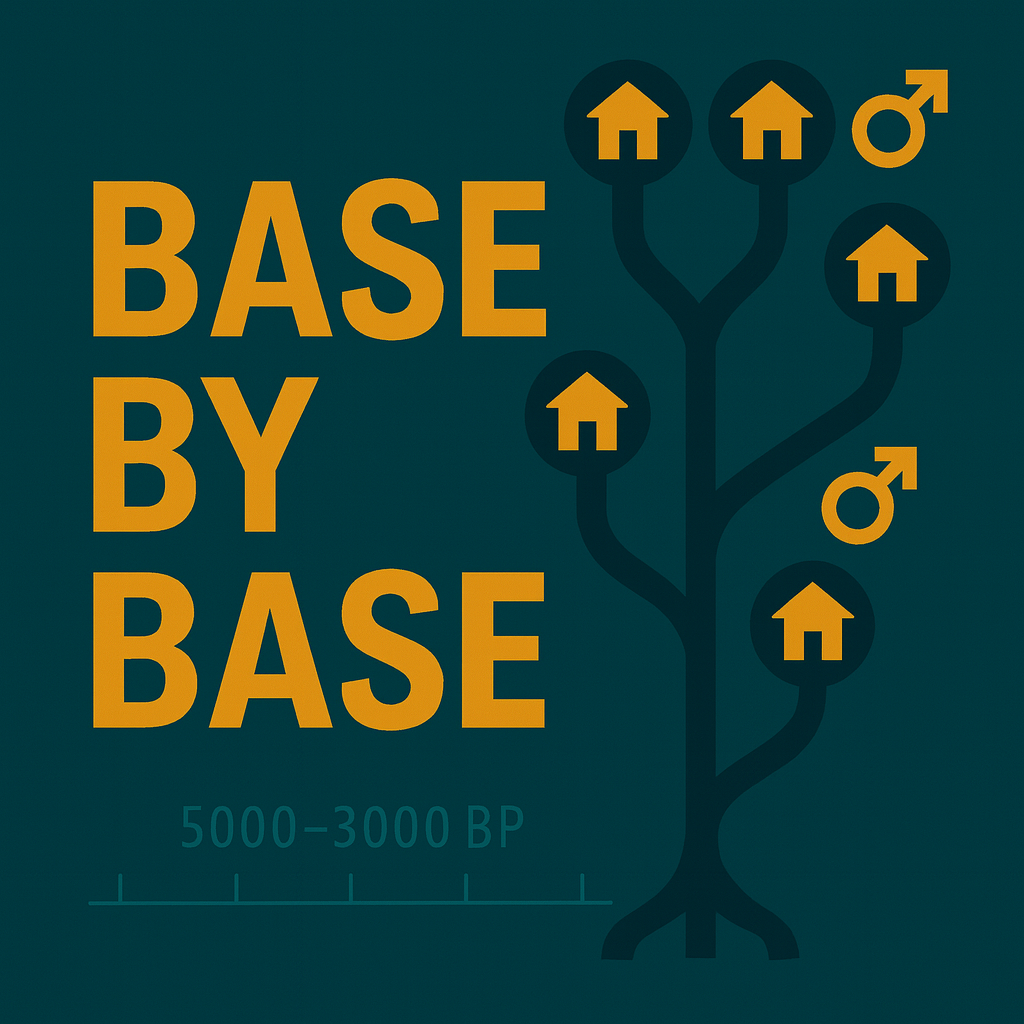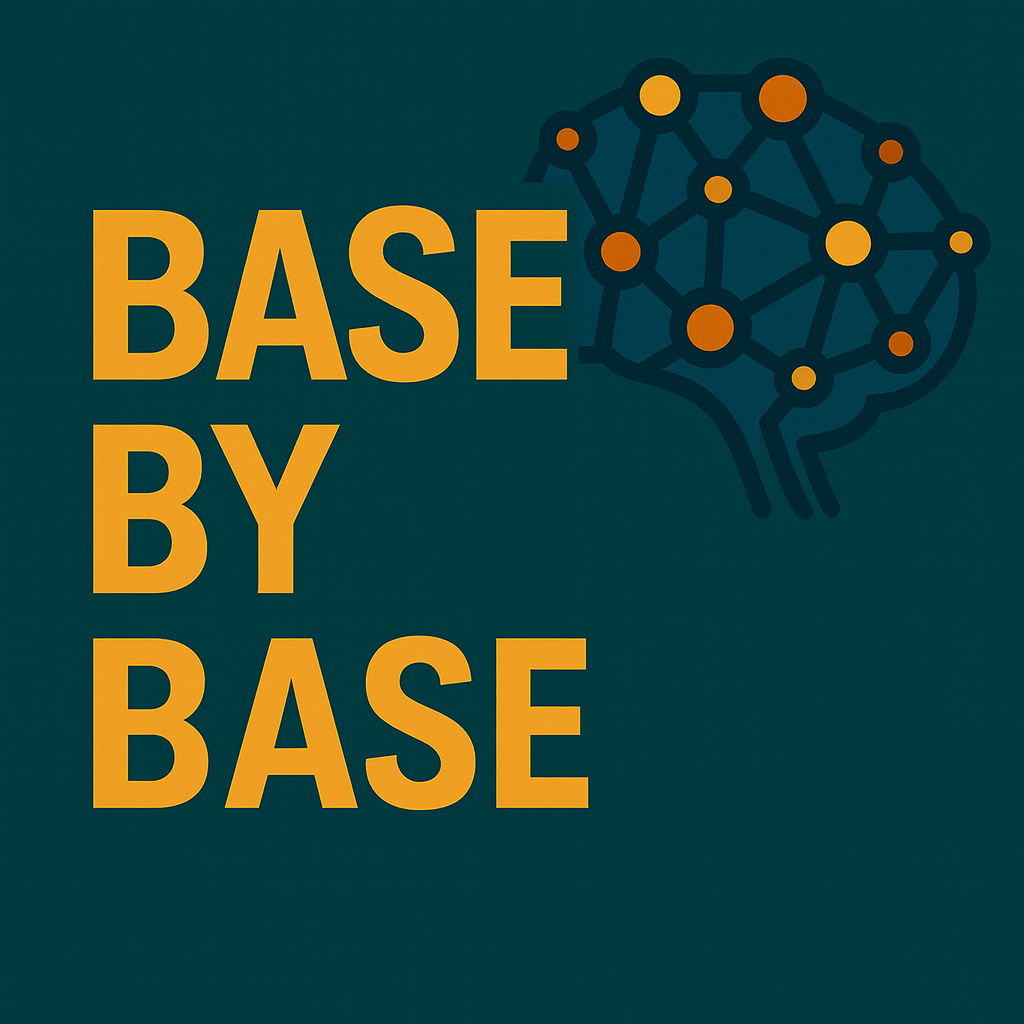Episode Transcript
[00:00:00] Speaker A: Foreign.
[00:00:14] Speaker B: Welcome to Base by Base, the papercast that brings genomics to you wherever you are. Thanks for listening, and don't forget to follow and rate us in your podcast app.
So today we're diving into what's really a biological disaster. One that has, you know, completely changed the risk landscape for agriculture and wildlife here in North America. I'm talking about the highly pathogenic avian influenza H5N1 since late 2021 is just swept across the continent.
[00:00:41] Speaker C: The scale is hard to even wrap your head around.
[00:00:42] Speaker B: It really is. We're talking over 160 million domestic birds culled in the U.S. the financial losses are something like two and a half to $3 billion. Yeah, but here's the puzzle, right? The thing that's been so frustrating for policymakers, for farmers.
Back in the 2014-2015 outbreak, we had a playbook. You know, aggressive culling, strict biosecurity, and it worked. The virus was extinguished.
[00:01:06] Speaker C: It worked perfectly. Stopped a cold.
[00:01:07] Speaker B: So why didn't it work this time? We use the exact same playbook, and it was, well, a spectacular failure. Why is this current panzoot so different?
[00:01:14] Speaker C: Well, that failure, that's the tell. It points to a huge shift in the virus's ecology, and now genetic analysis has pretty much confirmed it. The 2015 virus, H5N8, it never really set up shop in wild bird populations. It burned out. But this current strain, it has successfully plugged into this huge mobile reservoir.
[00:01:36] Speaker B: The wild birds.
[00:01:37] Speaker C: The wild birds. This study used viral genomics to prove that this North American episodic is being constantly driven and, you know, receded by wild migratory birds. And that just fundamentally alters everything.
[00:01:50] Speaker B: Right. Because if you misidentify who's keeping the virus going, your whole strategy is just. It's doomed from the start.
[00:01:56] Speaker C: Exactly.
[00:01:56] Speaker B: If it's not farm to farm, but this constant external pressure, you need a totally different kind of defense.
Before we get into the genetic proof, we really want to give credit where it's due. Today, we celebrate the work of the team at the University of Pennsylvania's Department of Pathobiology, including Lambdaar damodaran Anna S. Yeager and Louise H. Montclach. They've really advanced our understanding of this transmission ecology and brought a lot of needed clarity to this crisis.
[00:02:21] Speaker C: Yeah, their work is critical. And to ground this, we sort of have to look globally for a second. HPAI H5N1 isn't new. It's a persistent global issue. And it all stems from that Agus Guangdong lineage that popped up way back in 1990. 6.
[00:02:35] Speaker B: And for decades, its home base was mainly dense domestic poultry populations in Asia and Africa.
[00:02:41] Speaker C: That's right. That was the engine. But North America, like you said, had two really distinct events. The first was that 2014, 2015 outbreak with H5N8. Devastating for sure. Over 50 million birds culled contain but contained. And the reason was the virus never persistently established itself in the wild. So once you clear the domestic slocks, the outbreak was over.
[00:03:01] Speaker B: A temporary problem.
[00:03:03] Speaker C: Exactly. But then in 2021, Clade 2344B of H5N1 arrived and it just changed the game. This lineage is clearly better adapted.
[00:03:12] Speaker B: And that's when we started seeing it. All these other animals, that was the first big clue.
[00:03:16] Speaker C: We saw widespread mortality in species that you don't normally see. Impacted raptors, scavengers, even mammals like foxes and seals.
That ecological shift was a huge signal that the virus had found a home in the wildlife reservoir. It was behaving more like an enzootic.
[00:03:34] Speaker B: Agent, something that's just part of the local environment now.
[00:03:37] Speaker C: Yes. Rather than a foreign threat you can just stamp out.
[00:03:40] Speaker B: So the mission of this study then became, can we use the virus's own genetic code to prove that hypothesis? Can we track it and say for sure if it's wild birds or domestic poultry calling the shots?
[00:03:52] Speaker C: Precisely.
[00:03:52] Speaker B: Because if your policy is built on cull quickly, but the virus just flies back in from a pond a few hours later, you're just pouring money down a drain.
[00:04:00] Speaker C: And that's where viral phylodynamics become so powerful.
[00:04:03] Speaker B: Okay, let's get into the tools. How do you take thousands of viral sequences from all these different animals and places and actually turn that into a map of who infected whom and when?
[00:04:12] Speaker C: So the researchers took 1,818 sequences of the hemagglutinin gene, the HA gene, and they pulled these from wild birds, domestic poultry and mammals over the first year and a half of the outbreak.
The main tool they used is something called a Bayesian phylogeographical approach. You can think of it as viral phylodynamics.
[00:04:31] Speaker B: So it's like a molecular clock combined with a GPS tracker.
[00:04:35] Speaker C: That's a great way to put it. It uses the rate the virus mutates its genetic diversity to calculate the most probable timeline and location for every single transmission event. It's building an evolutionary tree and mapping it geographically at the same time.
[00:04:50] Speaker B: That sounds incredibly powerful, but it also sounds like it would be really sensitive to sampling bias. I mean, we know we get a ton of samples from commercial farms, but tracking Down. And sampling wild birds is much harder. They're way underrepresented. Right.
[00:05:04] Speaker C: That is the number one methodological challenge in this kind of study. Yeah, the team tackled it with a really clever technique they called titration analysis.
[00:05:11] Speaker B: Okay, what's that?
[00:05:12] Speaker C: They knew they couldn't just ignore the bias, so they built a control for it. They created five different data sets. The first was balanced, a one to one ratio of domestic to wild sequences.
[00:05:22] Speaker B: And then?
[00:05:23] Speaker C: Then they gradually added more wild bird sequences, skewing the data sets to get closer to what we actually see in the field, which is more like a one to three ratio. One domestic detection for every three wild ones.
[00:05:34] Speaker B: So by running the model on all these different ratios, what does that prove?
[00:05:38] Speaker C: It proves that their conclusions are robust.
If the finding wild birds are the source was just an artifact of having more wild bird samples, then that conclusion should have changed as the ratios changed.
[00:05:50] Speaker B: But it didn't.
[00:05:51] Speaker C: It didn't. The results held up across all five data sets. That told them the pattern they were seeing was real.
It was driven by the virus's actual genetic structure, not just by who they managed to sample more of.
[00:06:04] Speaker B: That's a really smart way to build confidence in the model. Okay, so what did the map show? How did this virus even get to North America?
[00:06:11] Speaker C: Well, it wasn't a single event. The analysis pointed to about nine separate introductions in just those first 18 months.
[00:06:18] Speaker B: Nine, wow. So it was a constant barrage. Where from?
[00:06:22] Speaker C: The big one. The lineage that really took hold came from Europe. It hit the Atlantic Flyway on the east coast in late 2021. But they also found at least seven other shorter lived introductions that came from Asia into the Pacific flyway.
[00:06:37] Speaker B: So the main infection came from the east, but the west coast was getting these smaller repeated hits from across the Pacific.
Our surveillance has to be looking in all directions at once.
[00:06:46] Speaker C: Absolutely. And once it was here, it moved fast. That Atlantic coast lineage jumped across all four major flyways, MS, Central and Pacific in about 4.8 months.
[00:06:58] Speaker B: Cross continental spread in under 5 months, driven by migration. I assume.
[00:07:01] Speaker C: The genetic data showed a really clear vector for it. Jumps between adjacent flyways were about 10 times more common than long distance jumps. And the direction was overwhelmingly east to west, about 4.4 times more frequent than west to east. The virus was just following the birds on their established routes.
[00:07:18] Speaker B: That paints the picture of the movement. So now for the billion dollar question. Who's the reservoir?
[00:07:22] Speaker C: The data were overwhelming on this point.
Wild migratory birds, they were the critical sustained source population and specifically the orderanceeriformes so we're talking ducks, geese and swans.
[00:07:37] Speaker B: The classic waterfowl, the classic hosts.
[00:07:39] Speaker C: They were the ones driving this seeding infections in almost every other species group they sampled.
[00:07:45] Speaker B: So why them? Is it just that there are so many of them, or is there something biological that makes them such a good reservoir?
[00:07:52] Speaker C: Its biological persistence, that's the key.
The researchers found that viral lineages could survive and circulate in these wild birds for around 10 months on average.
[00:08:01] Speaker B: 10 months?
[00:08:02] Speaker C: 10 months. Now compare that to domestic poultry. A lineage in a chicken or turkey farm only persisted for about 4.5 months before it either burned out or was culled. And seriforms can carry this thing, spread it over vast distances, and keep that viral gene pool circulating for the better part of a year.
[00:08:19] Speaker B: So the virus hits a farm, it's a fast, lethal outbreak, and that lineage is a dead end. So but it hits a flock of wild ducks, and it can just simmer and evolve for months.
[00:08:27] Speaker C: That's the difference between a temporary outbreak and an established end. Zoootic threat right there. Right. And you know, we hear a lot about the deaths. And other animals, like raptors, they were actually the second most detected group. Because they scavenge infected birds. Yeah, but the phylodynamics showed these non canonical hosts, the raptors, the mammals like foxes and seals, they were basically acting as sinks.
[00:08:49] Speaker B: Sinks. So viral dead ends.
[00:08:51] Speaker C: Correct. They would support these really short terminal transmission chains. They get infected, they often get very sick, and the lineage just stops. It persists for only about a quarter of a year. They're victims of the spillover. They are not the engine.
[00:09:05] Speaker B: That's such a vital distinction. You can't manage this if you don't know who the source is and who the sink is. Okay, let's talk about the farms. The study actually put a number on those spillover events, didn't it?
[00:09:14] Speaker C: It did. And for the industry, this is probably the most sobering finding. The analysis estimated between 46 and 113 independent spillover events into domestic poultry operations.
[00:09:25] Speaker B: Wait, between 46 and 113 separate times that wild birds introduced the virus into a farm?
[00:09:31] Speaker C: Yes. That's the number of times wild bird lineages breached biosecurity.
[00:09:36] Speaker B: That's not a containment effort. That's. That's defending a fortress under constant siege. How is that even possible? With all the new biosecurity we put in place after 2015?
[00:09:45] Speaker C: It's just a numbers game. When the prevalence in the wild is that high, the pressure is immense. And biosecurity, you know, it's not a magic bubble. In 2015, the main threat was farm to farm spread. You could contain it locally. Now the threat is everywhere, all the time, from water sources, feed, rodents, anything that crosses that line.
[00:10:04] Speaker B: Wow.
[00:10:05] Speaker C: And a related point here was about backyard flocks. The data showed they were getting infected earlier than the big commercial farms.
[00:10:12] Speaker B: How much earlier?
[00:10:13] Speaker C: On average, about 9.6 days earlier.
[00:10:16] Speaker B: And why is that? Just lower biosecurity.
[00:10:18] Speaker C: That's the most likely reason. You know, they often have outdoor access, more interaction with local wildlife. The genetics confirmed they were getting these independent spillover events from the wild before they hit the commercial sector.
[00:10:29] Speaker B: Which makes them a potential canary in the coal mine, doesn't it?
[00:10:32] Speaker C: Yeah, it absolutely does. They could be a key indicator. So when you pull all this together, the picture is clear. The ecology of H5N1 in North America has fundamentally shifted. The virus's evolution and spread are now tied directly to the migratory patterns of wild birds, especially anseriforms. It's established here. It's part of the wildlife ecosystem now.
[00:10:52] Speaker B: So what does this mean for policy? I mean, the official U.S. and Canadian policy still treats H5N1 as a foreign animal disease, right? The goal is elimination through culling.
[00:11:02] Speaker C: It is.
[00:11:02] Speaker B: But if the virus is enzoetotic, that strategy can't ever work. You can stamp on a fire on one farm, but you can't eradicate the source. The whole model has to change.
[00:11:12] Speaker C: The policy has to pivot. It needs to be about managing risk at that wild agriculture interface, not just cleaning up after a breach. Culling is still necessary, of course, but it's not enough when you're facing, you know, potentially over a hundred separate attacks from the outside.
[00:11:26] Speaker B: So what would that look like?
[00:11:27] Speaker C: The study points to three big first, enhanced surveillance, but focused on the wild birds. We need to be able to forecast outbreaks based on their movements, not just react when a farm gets hit.
[00:11:40] Speaker B: A proactive approach giving farmers a heads up before the migratory wave even arrives.
[00:11:44] Speaker C: Second, we need a serious rethink of biosecurity to reduce those spillovers. And third, we need to have a real conversation about new tools like domestic animal vaccination.
It's. It's a controversial topic in North America, but it might be unavoidable if the virus is truly here to stay.
[00:12:01] Speaker B: And what about those backyard flocks? You said they were like a canary in the coal mine.
[00:12:04] Speaker C: That's a huge opportunity. If we know they're getting hit about 10 days before commercial farms, monitoring them could become a critical early warning system.
[00:12:13] Speaker B: So you could predict when the viral pressure on an area is about to spike.
[00:12:16] Speaker C: Exactly. It could give commercial operations a chance to tighten biosecurity before the peak threat arrives. It turns a vulnerability into a surveillance asset. Now we do have to remember the study's limitations. The sampling bias, while they addressed it really well, is still a factor.
The true viral diversity is probably even greater. And they only used the HA sequence so they couldn't see the full impact of viral reassortment. So we need to keep monitoring this over future seasons. Absolutely, to confirm this is the new normal. But the central insight is, I think, definitive. The 2021-2023 Epizootic was driven by continuous seeding from wild migratory birds. That's a fundamental change from 2015. The risk management has to adapt. It has to treat this as an end zoootic threat that's established in our wildlife, not just some foreign invader we can kick out. And that leaves us with a pretty big and I think, provocative thought for you to consider.
If the persistence of this highly pathogenic virus is now tied to the global ecology of wild birds, what does that mean for our long term strategies to reduce the risk of human exposure?
[00:13:19] Speaker B: This episode was based on an Open Access article under the CCBY 4.0 license. You can find a direct link to the paper and the license in our episode description. If you enjoyed this, follow or subscribe in your podcast app and leave a five star rating. If you'd like to support our work, use the donation link in the description Now. Stay with us for an original track created especially for this episode and inspired by the article you've just heard about. Thanks for listening and join us next time as we explore more science base by base.
[00:14:07] Speaker A: Darn over wetlands Wings cut through the mess.
Lines on the water that no one can resist.
Something unseen Riding feathers on the wind.
Ghost in the geno where the stories begin Every flight path draws a hidden life across the atlas in a viral design we read the branches like a map in the sky Searching the sequences asking why Signals on the flyways burning in the cold Carried by the wild hearts nobody can hold from field to shoreline we follow what they trace Trying to stay one step ahead of what we face.
Backyard coupes hear the rumor first nine days early like a warning burst Numbers on a screen Flocks on the ground around 40 different entries for the same dark sound Atlantic echoes Pacific in reply Currents of migration where the fault lines lie we trace introductions like sparks in the night Counting every node in the network of flies.
Signals on the flyways written wing by wing stories in the genomes of every bird that sings from wild to far land the border starts to blur but early signs and small ys tell us where we were Signals on the fly way shining from above Turning fear and data into maps we can trust and love.
Sam.




